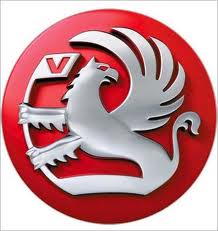Astra F
|
Oil Consumption, Measure General The term "oil consumption" of an internal combustion engine refers to the amount of oil which is used as a consequence of combustion. Oil consumption should under no circumstances be confused with oil loss caused by leaks in the oil pan, cylinder head cover, etc. The purpose off the engine oil is to:
1 Separate surfaces that slide on one another with an oil film, i.e. prevent dry friction; 2 Conduct the heat produced by friction away; 3 Conduct combustion residues away.
These tasks make the consumption of a certain amount of oil necessary, i.e. the expectations of many who claim that further development of the internal combustion engine will lead to an engine that does not require oil are absolutely nonsensical. The oil consumption is however influenced by external operating factors, driving style and manufacturing tolerances. Under normal circumstances, the consumption is so minimal that only a small amount need be topped up between the prescribed oil change intervals, or not at all. Topping up is however absolutely necessary if the oil level sinks below the "MIN" mark on the dipstick. Likewise, ensure that the oil level does not exceed the upper "MAX" mark on the dipstick, as this leads to increased oil consumption.
Oil Consumption, Measure (Continued) As oil consumption is a technical necessity, indications that an engine is not consuming oil mean that we can conclude that the oil is being diluted by special operating conditions. Frequent cold starts, driving when over-cold, etc. result in the oil flowing back to the oil pan containing fuel particles and condensation, and thus becoming "diluted"; this can lead to the incorrect supposition that the engine is not consuming any oil at all. Oil diluted in this fashion lacks lubricating power and may lead to engine damage if the prescribed oil change intervals are not observed. The main causes for oil dilution are driving in mainly urban traffic and frequent driving at too low engine speeds when the engine is cold. The oil consumption first begins to stabilise after operating for a few thousand kilometres; therefore, measurements of the oil consumption only become realistic after about 7.500 km/ 4.000 miles. Before measuring the oil consumption, ensure that the engine is not losing oil due to a leak. Notice: The oil dipstick can only be used for checking and not for measurement. The engine must always be switched off for at least 2 minutes before the oil level can be checked. If, after an oil change, the maximum engine oil filling does not match the maximum level mark on the dipstick, this can be attributed to manufacturing tolerances. All information regarding the permissible engine oil consumption and filling quantities are included in the User's Manual.
Engine Oil Consumption, Measure (continued) Measuring Method
1 The check is carried out with the vehicle on a horizontal surface with the engine at operating temperature (engine oil temperature ≥ 80 ° C/176 ° F). 2 Allow engine to run at idle speed immediately before draining the engine oil. 3 Drain engine oil immediately after switching off engine and record the time with a stopwatch - draining time: 3 minutes (trials have shown that the draining should be kept to within 3 minutes). 4 Always allow the engine oil to drain until the stream of oil turns to drops. 5 Allow the drained engine oil to cool down to approx. 20 ° C/68 ° F (1 to 2 hours). 6 The amount of cooled oil determined in a measuring cylinder 1) and fresh oil is added up to the maximum engine oil filling quantity, minus 0.25 litres for the unchanged engine oil filter. 1) 7 Using this amount of engine oil, the customer should travel at least 500 km/350 miles without of course re-filling with engine oil (the driver should keep to his normal routes and driving styles). 8 The procedure described above (points 1 to 4) is then repeated with exactly the same time for draining engine oil. 9 The amount of engine oil "absent" from the measuring cylinder is the engine oil consumption/distance covered.
1) Measuring cylinder (transparent) with 1 to 2 litre capacity.
|
